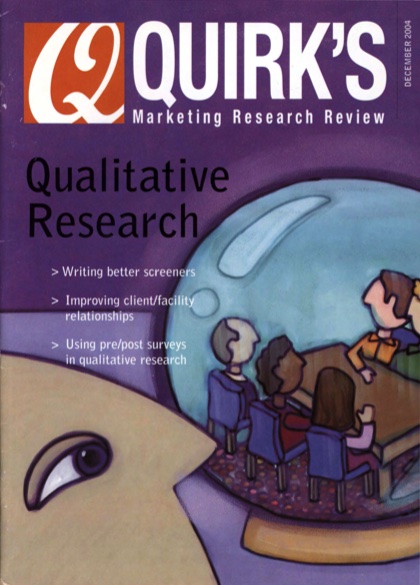For focus group recruiters, a positive attitude is everything
The 2004 article “Bring a can-do attitude to recruiting out-of-facility focus groups” by Rhoda Schild established that when conducting nontraditional focus groups, it is essential to be positive and forward-thinking. Oftentimes, clients want to conduct focus groups to gather insights from a person’s natural reaction or thoughts in various locations. This can be anywhere from an out-of-state sporting event to public transportation. Optimism is key, even in stressful or unique situations. “Never say, ‘We don’t have those people.’ If you do not have them, get them. This is the recruiting business. A good recruiter on a bad day should pull together a reasonable amount of new respondents,” said Schild. Maintaining a positive attitude throughout the recruiting process and research project is of utmost importance. “If you are in the recruiting game this phrase should be at the top of your list: ‘If the price is right, we can do anything.’” Along with optimism, Schild stated that recruiters must be trained for the role and should be encouraged to be quick while maintaining a positive attitude.
How visual ethnography helps uncover consumers’ emotions
Visual ethnography often allows researchers to gain deeper insights than traditional focus groups and self-administered surveys. “Visual ethnography observes what consumers do…It doesn’t ask them to remember what they have done in the past or predict what they may do in the future, but instead listens to them describe what they are doing right now and why,” said Mark Cooper, author of the 2004 Quirk’s titled “Why visual ethnography makes sense as a research technique.”
Cooper offers insights gathered from research projects conducted using visual ethnography. After researching shopping behaviors among immigrant Hispanic women via shop-alongs, it was found that shopping with family or friends gave them a sense of comfort outside of their homes and a place where they could socialize. “Additionally, they used shopping as a way to learn and stay informed about American culture. Thus, shopping meant much more to immigrant Hispanic women than just making purchases,” said Cooper.
In another example, aimed at understanding the motivators of loyalty among frequent museum visitors, ethnographic research revealed that their visits were not driven by exhibits but rather by their view of the museum as a comfortable, familiar place. After analyzing over 150 hours of video, intercept interviews, hidden-camera observation, in-home and in-museum ethnographic interviews and photo journals, the researchers found that frequent visitors used the museum as a place to spend time with friends and family, relax and learn. “The state-of-the-art exhibits serve as a backdrop, albeit an important one, for these other activities,” said Cooper.
Then, as now, cash and electronic gadgets top gift lists
20 years ago, a C&R Research Services survey found that children were more likely to prefer electronics over toys for Christmas. Money was also preferred by 68% of kids. Children expected to receive the most gifts from their parents, with 33% believing that they would get five to 10 presents from them. Twenty-five percent of children said they pay for gifts with their own money and 59% saved to purchase holiday gifts. Nearly half (48%) said they would ask their parents to donate some of their allocated gift money to charity.
